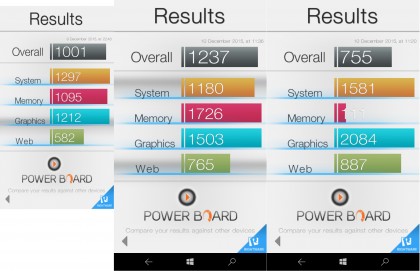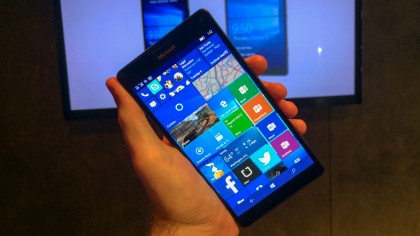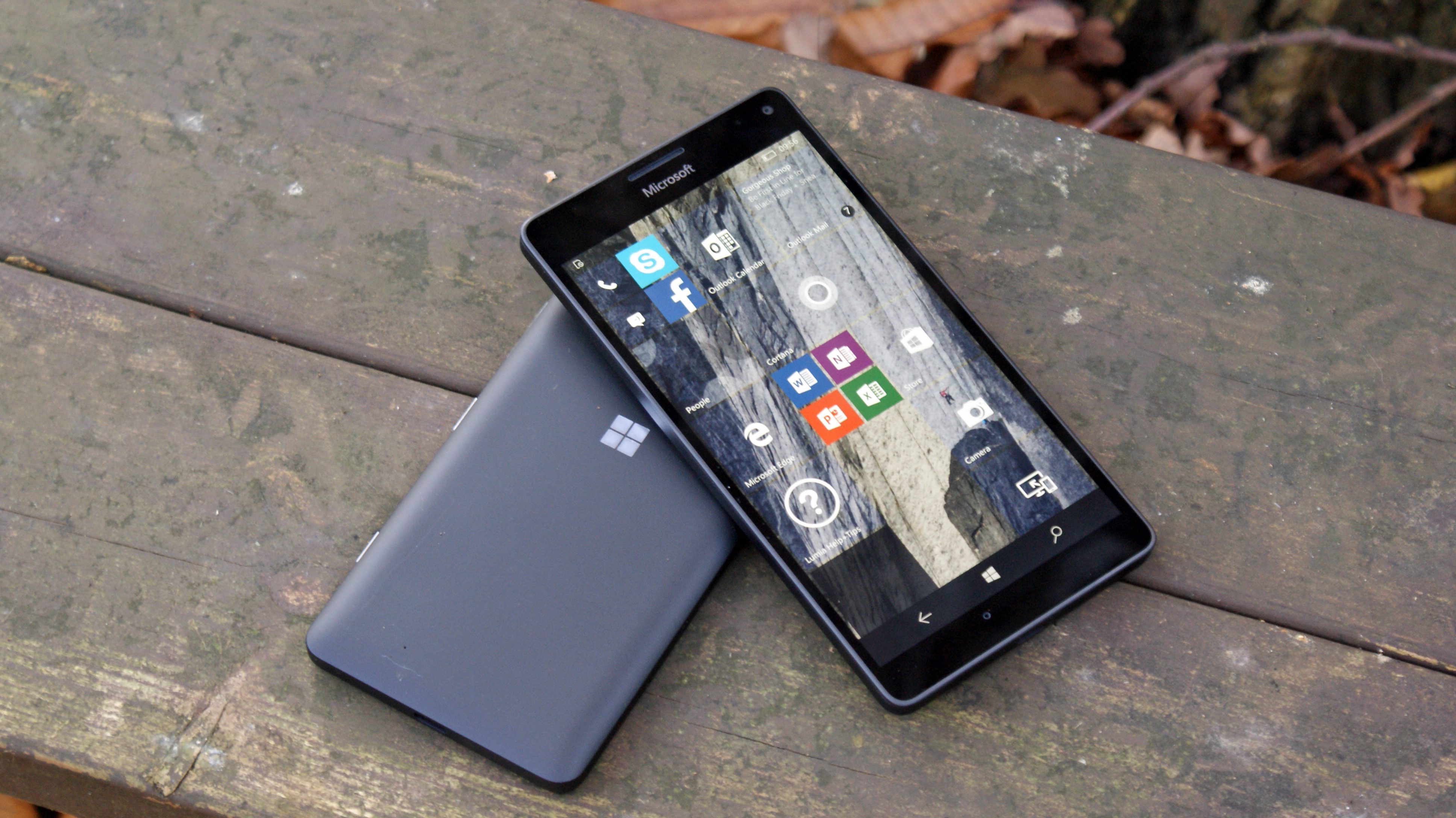Why you can trust TechRadar
If there was one advantage in waiting so long before bringing out the next elite Lumias, it was that Microsoft had the chance to thoroughly analyse hardware trends before jumping in. As such, the Microsoft Lumia 950 XL comes well equipped, both by the standards set for 2015 and for the future.
Powering the device is the controversial Qualcomm Snapdragon 810, an octa-core 64-bit chip clocked at 2.0GHz, and backed up with 3GB of RAM. Much has been written about the Snapdragon 810, and the various '-gates' it's caused, in the past year.
Microsoft has worked hard to counter reported overheating and other issues. The chip is a newer version from Qualcomm, lacking some of the problems of its predecessor, but perhaps more importantly, the Lumia 950 XL has liquid cooling. That's right: liquid cooling.

The geek cred of such a feature notwithstanding, in general use I still found that the device could become quite warm, especially when attempting to do several things at once, or when experiencing one of Windows 10 Mobile's frequent bug episodes.
This also raises concerns regarding the longevity of the device. There's no doubt that Microsoft will continue to optimise both the OS and the chip so they can run with some increased degree of harmony, but whether the phone might melt internally beforehand is another question altogether.
Despite this, whether gaming or running multiple apps at once, I experienced no slowdowns. Really, there's nothing in the Windows Phone app ecosystem that can really challenge the likes of the 810, especially given that the previous most powerful chip in widespread use was 2013's Snapdragon 800, in the likes of the Lumia 1520 and 930.
The app problem on Windows 10 Mobile is the same as it was on Windows Phone – that's to say, pretty bad. Geekbench 3 was not available for use, and so Basemark OS 2 was used. For comparison, I also ran the benchmark app on both the Nokia Lumia 930 and the Microsoft Lumia 950.
All results ought to be taken with a pinch of salt. Windows Phone has many great third-party solutions to many aspects of the app gap, but a proper, current benchmarking app has yet to arise.
Overall the results were a little odd, with the Lumia 930 achieving an overall score of 1001, the 950 managing 1295 and the XL managing only a paltry 890. This doesn't show the whole story however, with the graphics section being quite telling.
Here the 930 managed 1212, the 950 came to 1436 and the XL bounding ahead to 2014. In the System and Web sections, the XL achieved a considerable lead also. However, this was only due to a odd problem with the memory segment, seemingly due to the device attempting to write to microSD rather than the faster flash system memory.

With regards to memory management, Windows 10 Mobile takes a cue from iOS. Instead of truly running in the background, apps are paused, with only certain trusted sources able to break this lock.
This means that multi-taskers might be slightly frustrated, but it makes for swift transitions between apps, as well as meaning that wayward processes have less of a chance to malfunction and consume battery. The device can handle around eight open apps at once before beginning to close processes.
In everyday use I found the Lumia 950 XL to be a strong performer. When swiping through the OS, and opening and closing apps, everything worked as it should. However, as is something of a trademark with Windows Phone, there wasn't much separating it from my Lumia 930 in terms of performance.
The spec sheet of the XL may be an indication of where things are heading, but for the moment it might be slight overkill.
But with the in-built 32GB of storage, along with the potential to at least triple that via a microSD card, even the most demanding of power users ought to be satisfied.
Sean is a Scottish technology journalist who's written for the likes of T3, Trusted Reviews, TechAdvisor and Expert Reviews.
